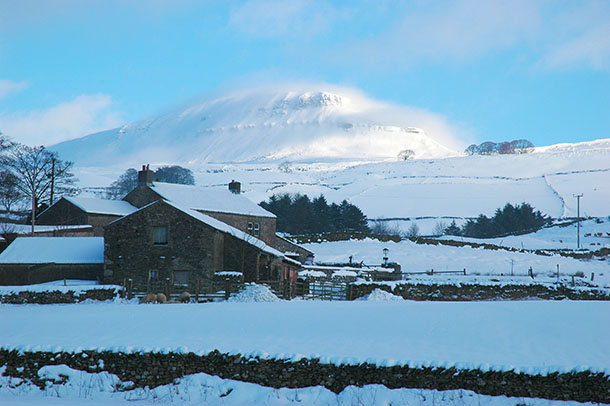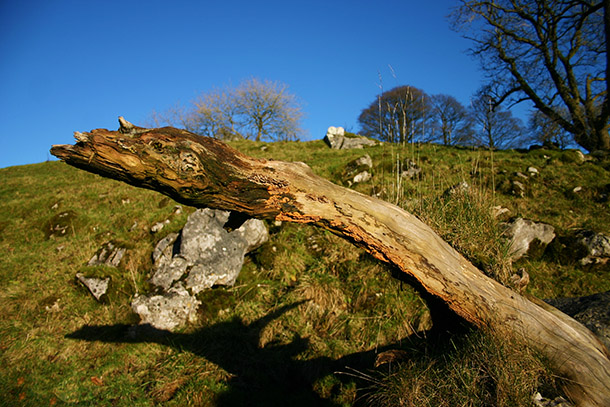 Printed in the first Dalesman magazine (April 1939) is this little snippet describing an early Three Peaks walk – certainly not the route walkers would normally take today but an interesting one-way trek from Dent to Kilnsey. A J Brown was a popular walking-book writer between the 1920s and 1950s. Striding Through Yorkshire, written in 1938, was one of his most popular books and can be picked up for a song on Amazon, Ebay or second-hand bookshops. He was a prolific walker – his book, Four Boon Fellows – a Yorkshire Tramping Odyssey (1928), was about a 100-mile walk he did one Easter weekend from Barnard Castle to Ilkley.
Printed in the first Dalesman magazine (April 1939) is this little snippet describing an early Three Peaks walk – certainly not the route walkers would normally take today but an interesting one-way trek from Dent to Kilnsey. A J Brown was a popular walking-book writer between the 1920s and 1950s. Striding Through Yorkshire, written in 1938, was one of his most popular books and can be picked up for a song on Amazon, Ebay or second-hand bookshops. He was a prolific walker – his book, Four Boon Fellows – a Yorkshire Tramping Odyssey (1928), was about a 100-mile walk he did one Easter weekend from Barnard Castle to Ilkley.
I’m not sure how far Brown’s Three Peak walk was – my guess is between 35-40 miles depending on the exact route. Not bad for a day’s trek which included three of Yorkshire’s highest mountains (and two pubs).
 Interestingly, the route took in Weathercote Cave. I visited neighbouring Hurtle Pot (pictured) on Monday, close to the Ribblehead Viaduct Navvies church of St Leonard’s in Chapel-le-Dale. Nowadays Weathercote Cave, just a few hundred yards north of Hurtle Pot, following the mysterious disappearing Chapel Beck, can only be visited by gaining permission from the landown
Interestingly, the route took in Weathercote Cave. I visited neighbouring Hurtle Pot (pictured) on Monday, close to the Ribblehead Viaduct Navvies church of St Leonard’s in Chapel-le-Dale. Nowadays Weathercote Cave, just a few hundred yards north of Hurtle Pot, following the mysterious disappearing Chapel Beck, can only be visited by gaining permission from the landown er.
er.
In days gone by Weathercote Cave was a major tourist attraction – visitors paid to view the spectacle, described as follows by Victorian writer Harry Speight:
‘The rocks here ascend to a vertical height of 108 feet, and the water is seen leaping from a large cavity 33 feet below the surface, and, expanding into a misty sheet of bright dissolving particles, drops 75 feet below with such tremendous violence into the stony whirlpool at our feet, that the noise and reverberation of the clashing waters render conversation an impossibility.’
The painter Turner visited the cave several times and it has been described as one of the wonders of England, especially when the beck is in full spate. However, the place was closed to the public in 1971 following the death of a visitor.
If you can’t obtain permission then the next best way to see Weathercote Cave is to visit
http://oldfieldslimestone.blogspot.co.uk/2013/02/the-darling-of-early-tourists-cave-this.html
Back to A J Brown – I was reminded of him at Bill Mitchell’s funeral when one of Brown’s poem’s was mentioned. Anyone who loves the Dales will relate to Brown’s sentiments. Here is the full verse:
There must be dales in Paradise
or what would a dalesman do?
There must be dales in Paradise
to wander through and through
Bold Pen-y-gent and stern Whernside
are wondrous fair to see
And bonny Dentdale’s sunny slopes
are paradise for me.
To feel the rhythm of the pace that
wanders far and free!
To stride rough pastures of Cam Fell
and Langstrothdale so fair!
On steps above Wharfe’s waters bright
to breath the moorland air
Is nectar to tired townsmen who
the asphalt deserts flee.
But when we’ve done with wandering
amongst these well loved hills.
When Earth has loosed its hold on us,
its blessings and its ills.
We’ll find familiar pathways as
we reach fair Zion’s strand.
And our feet will know the blessings
of that beauteous Beulah Land.





